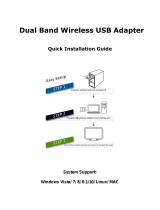
System Information.............................................................................26
Product
System
Logs ...
Time: S
Notifica
Firmwa
UPS Se
Schedul
Wake-U
SNMP S
Utility..
WAN Co
LAN ....
LAN Con
DHCP S
Samba
Samba S
File Acce
Samba R
Samba A
AFP (Ap
NFS Set
Media M
Share M
Connec
Disks In
S.M.A.R.
Bad Bloc
RAID In
Create
RAID Le
Edit RA
Remove
Expandi
Migratin
Space A
Allocatin
Modify iS
Delete V
Allocatin
Advance
iSCSI Bl
iSCSI CR
Share F
Adding F
Modify F
Remove
NFS Sha
Information ................................................................................26
/Service Status ............................................................................27
..................................................................................................28
System Management ...........................................................................29
etting system time.......................................................................29
tion configuration .........................................................................30
re Upgrade ..................................................................................31
tting ...........................................................................................31
e Power On/Off............................................................................32
p On LAN (WOL) ..........................................................................33
upport........................................................................................34
..................................................................................................34
System Network..................................................................................39
nfiguration..................................................................................39
..................................................................................................40
figuration...................................................................................40
erver Configuration.......................................................................41
/ CIFS.........................................................................................41
ervice ...................................................................................................41
ss Cache................................................................................................41
ecycle Bin..............................................................................................42
nonymous Login Authentication ................................................................42
ple Network Setup) ......................................................................42
up .............................................................................................43
FTP......................................................................................................43
Media Server .......................................................................................44
anager Settings...........................................................................44
edia Folders................................................................................45
ting DMAs to the Media Server........................................................45
HTTP/ Web Disk ..................................................................................46
UPnP ...................................................................................................47
Nsync Target .......................................................................................47
Bonjour Setting ...................................................................................47
Storage Management...........................................................................48
formation ...................................................................................48
T. Information........................................................................................49
k Scan................................................................................................... 50
formation....................................................................................50
a RAID........................................................................................51
vel......................................................................................................... 53
ID ..............................................................................................54
RAID.........................................................................................55
ng a RAID...................................................................................56
g a RAID ....................................................................................57
llocation .....................................................................................59
g Space for iSCSI Volume.........................................................................60
CSI Volume...........................................................................................61
olume....................................................................................................62
g Space for Target USB Volume................................................................. 63
Option......................................................................................63
ock Size .................................................................................................64
C/Checksum ..........................................................................................64
older ..........................................................................................64
olders ...................................................................................................65
olders....................................................................................................66
Folders.................................................................................................. 66
re .........................................................................................................67
5






















